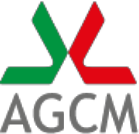AS301 – CHANGES TO CURRENT REGULATIONS IN THE INSURANCE INDUSTRY – INSURANCE CODE
PRESS RELEASE
PRESS RELEASE
Antitrust on the Insurance Code: extend use of the CID and increase transparency in TFR choices (retirement benefits)
The Italian Competition Authority, at the conclusion of its meeting on Wednesday 1 June 2005, made a number of observations on the draft legislative decree dealing with the Insurance Code, which is at present being examined by Parliament.
In the first place, the Authority expressed its approval of the Code’s objectives of simplification and rationalization of the regulatory framework. The changes contained in the text, which are intended to improve the transparency of contractual conditions in insurance policies and the availability of information about insurance contracts, do indeed have the potential to increase competition in the market for insurance policies.
On the subject of the close link between transparency and competition, the Authority believes that the Code, with suitable additions, can represent a further strengthening of current regulations with a view, too, to establishing the relationship with services offered by entities other than insurance companies (banks, financial intermediaries, pension funds).
At present, the different products offered, which a consumer might view as possible investment alternatives, belong to separate (even if contiguous) marketplaces.
Precisely because of this closeness, the more the characteristics of insurance products resemble those of analogous products from different kinds of suppliers, the more lively the competition is likely to be.
This is especially true if we consider that shortly employees will have to express their preferences as to the handling of their retirement benefits (TFR, or Trattamento di fine rapporto); they will be able to choose, and this is the default if they do not say otherwise, to use the sum to purchase various forms of supplementary pensions, offered not only by pension funds but also by insurance companies.
So it becomes essential to take steps to make it easy for the employee to decide which product best meets his or her requirements in terms of quality and price.
Another interesting aspect, in the Authority’s view, is what the Code provides regarding third-party automobile insurance.
Since the new provisions abrogate a large portion of the existing regulations as to third-party automobile insurance, and in particular Law no. 990/1969, it would be possible, within the limits set by Parliament’s terms of reference, to deal with the question of direct payment of claims.
As was amply demonstrated by the Authority at the time of the Survey of third-party automobile insurance, one of the main obstacles to the development of real competition in that market is the special nature of the contractual relationship which comes to exist.
In the case of third-party automobile insurance, the claim is not paid to the client but to a third party who has no contractual obligations to the insurance company which must pay the claim. This reduces the insurance companies’ ability to propose contracts containing incentives for “virtuous” behaviour by the different parties involved (those lodging a claim, repairers, etc.) so that they will not, out of negligence or for financial gain, contribute to an artificial increase in the sum to be reimbursed.
In other words, the use of indirect forms of payment of damages – whereby the victim of an accident is reimbursed by the insurance company of the person who caused it - reduces businesses’ incentive to control costs and may compromise the effective application of competitive forces.
A system of third-party automobile insurance based on direct payment of claims, instead, offers numerous advantages for the encouragement of competition: it stimulates potential clients to search for the best company and creates an incentive for insurance companies to compete on quality of service.
There should be a gradual introduction of a legal obligation to pay claims directly.
The so-called CID (Convenzione di indennizzo diretto, or Direct Claims Payment Agreement) is today applied to too few claims: claims involving collisions between no more than two motor vehicles, both identified and covered by third-party automobile insurance, but excluding mopeds and farm machinery; claims where there is agreement between the parties as to the attribution of responsibility and where only property damage is involved (or, as of the last few months, minor personal injury).
So, at the time the policy is stipulated, the parties do not know whether the CID will be applicable or not to any claim. This means the insurance company cannot optimise its policies (contracts with incentives, use of approved repairers) which should be one of the main advantages of direct payment of claims, in that it allows an ongoing relationship between the insurance company and the person who has suffered damage; this does not exist in the case of third-party automobile insurance with indirect payment of claims.
Similar benefits could be attained, for example, by changing the present procedure so that it is the person who suffers damage who lodges a claim directly with his or her own insurance company.
These innovations, by extending the use of the CID, could also serve to make overall improvements to the Agreement, for example by identifying simplified procedures for determining responsibility where the parties cannot agree (making it impossible to arrive at joint signatures on the claim form).
Rome, 6 June 2005

